The Tradition of Mochitsuki
2022/12/31
It is the end of 2022 and the New Year’s holiday is kicking into full gear here in Japan. There are many different traditions involved in the celebrating the New Year within Japanese culture, from visiting religious sites to preparing and eating a variety of different types of special foods. In this blog, we will discuss mochi, the chewy rice cake dish with an interesting connection to New Year’s festivities in Japan.
Mochitsuki (rice cake-making) is a tradition that has a long history in Japan. Originally dating back to the Heian period (794-1185 CE), mochi was a food that was made exclusively as offerings for the gods, but from the mid-Edo period period onward became a food that was also made for human consumption as well. It now comes in quite a lot of different varieties and is consumed in various different ways, from sweet bite-sized treats, to chewy dumplings in soup.
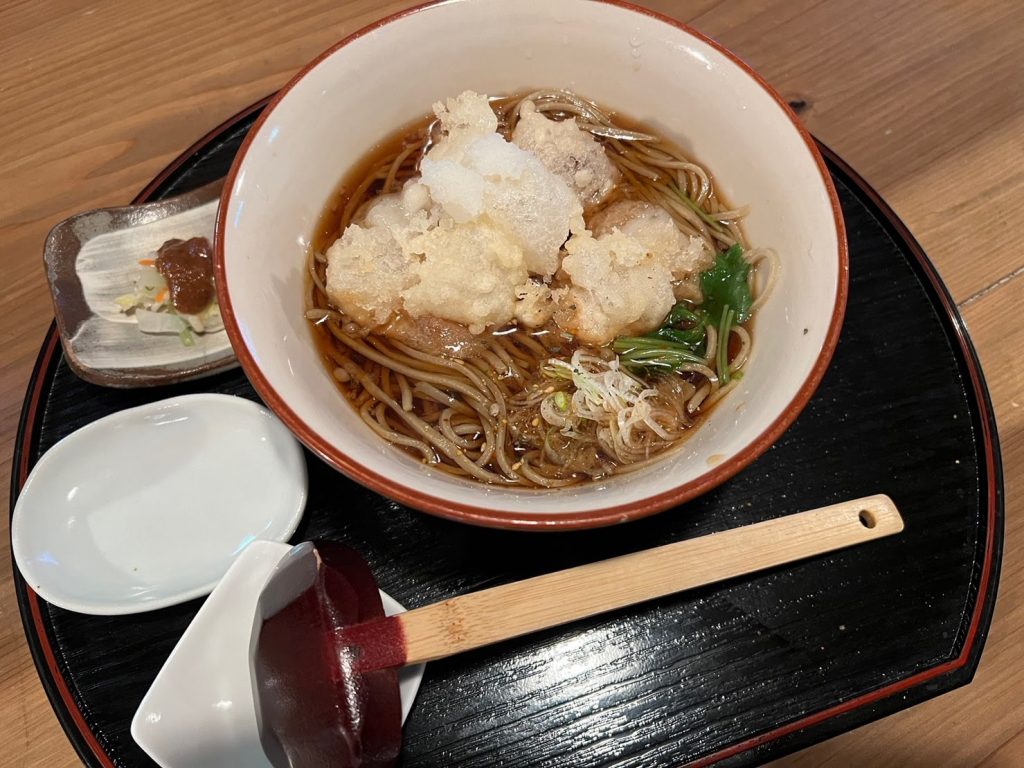
Tempura mochi dumplings in soba soup, served fresh at the Yamato-an soba restaurant in Yoshinoyama.
The round shape that mochi cakes are traditionally made into resemble the moon, which is where the term “mochitsuki” comes from: “mochi” = “rice cake,” “tsuki” = “moon.” Mochi cakes are also said to resemble mirrors (“kagami“), which are sacred objects in Shintoism, the most famous of which is perhaps the Yata no Kagami mirror, one of the 3 sacred treasures that make of the Imperial Regalia of the Japanese Imperial Family and an object said to have been forged by a god.
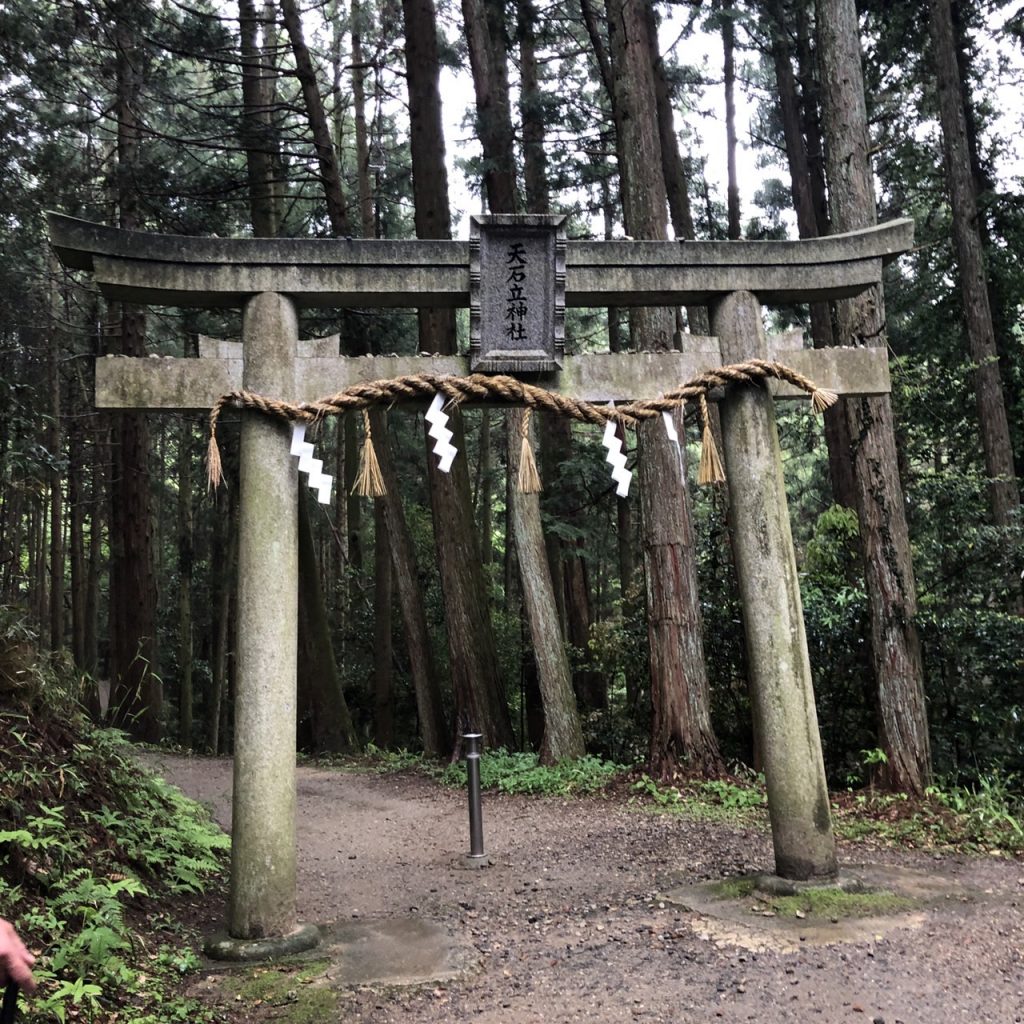
Mochi was originally a food that was exclusively made for deities in past times.
Mochi that is made for the purpose of presentation to a kami or Buddha is still called kagami mochi, which consists of a 2 piece stack of rice cakes topped off with a mikan orange. Great care is often taken to make sure that each rice cake is as beautiful as possible, with their rounded surfaces often becoming quite shiny, resembling a mirror as is their namesake.
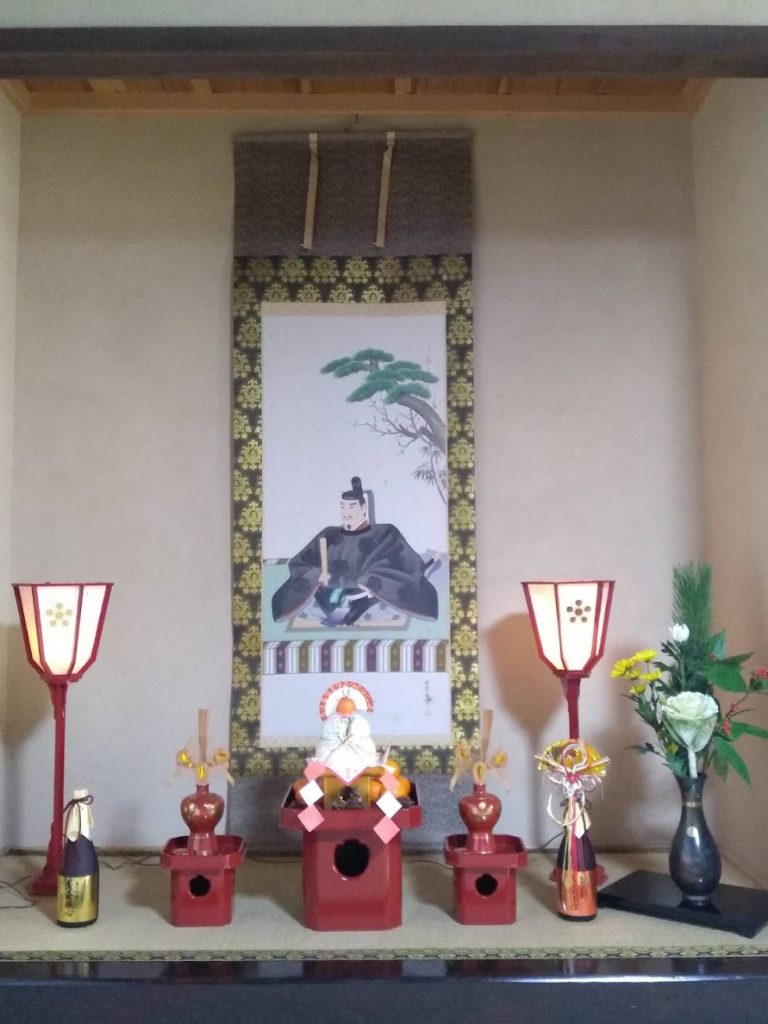
Kagami mochi on display in traditional fashion.
The act of making kagami mochi (and mochi for human consumption) as a group has been a long-standing ritualistic tradition in Japanese society, bringing people together and facilitating communication and community building. However, in modern times it is quite easy to just purchase mochi at the store around the New Year’s holiday as well.

The process of steaming glutinous mochigome rice at Guesthouse Omoya in Mitsue Village, Nara Prefecture.
Handmade mochi cakes require some knowhow and specialized tools to make, so it is a somewhat difficult tradition to maintain unless the knowledge is passed on directly to others. First, the type of glutinous rice used in mochi making (“mochigome” is a specific type that differs slightly than normal rice that is consumed, although it belongs to the same species. This rice must be prepared properly, and then steamed to the point that it becomes soft, ready to be mashed into the dough from which mochi is made.

Steamed mochigome rice.
Traditionally, mashing steamed rice was done by hammer and pestle, requiring someone to move the mochi by hand while the hammerer forcefully mashes it into dough with a kine (giant wooden mallet). This process must be completed fairly quickly because as the mochi cools it become less malleable. You can observe this process, sometimes performed at blistering speeds by professional rice cake makers at traditional-style shops (such as the famous Nakatindou shop in Nara City), but this type of hammer-made mochi is becoming increasingly rare when it comes to household made mochi due its challenging and dangerous nature; catching even a glancing hammer blow to the hand could have terrible consequences.
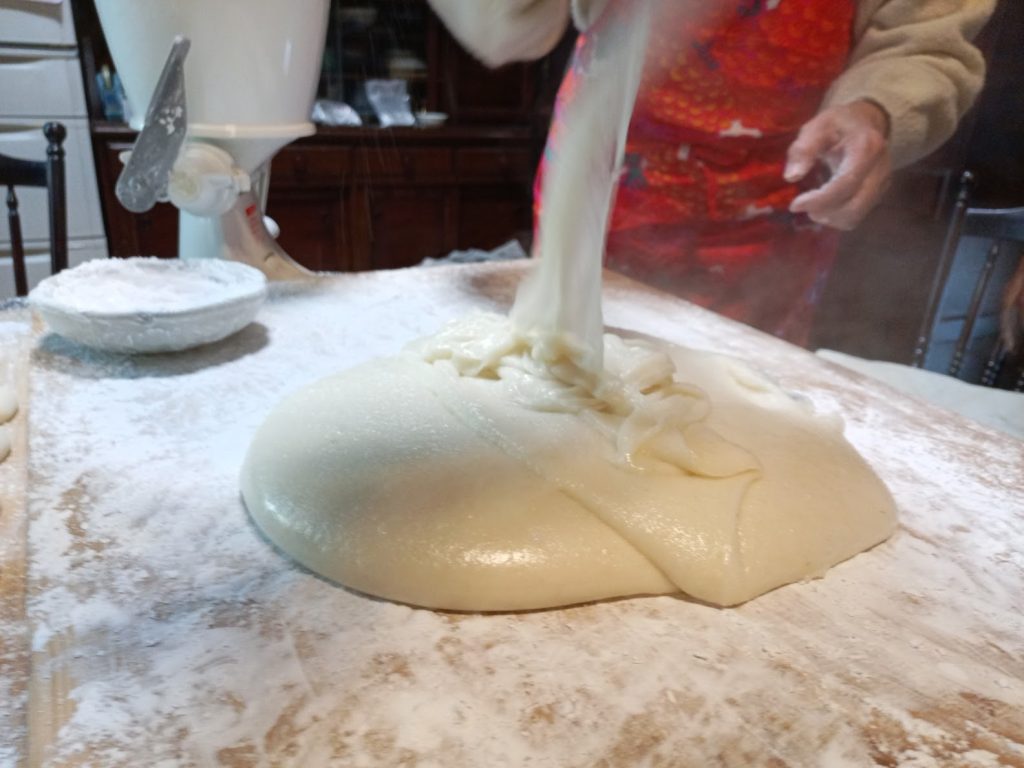
Steaming hot mochi dough being prepared for cake-making.
To decrease the challenge, others may choose to use a mochi making machine which automatically turns steamed mochi into a dough that can be shaped into mochi cakes by hand.
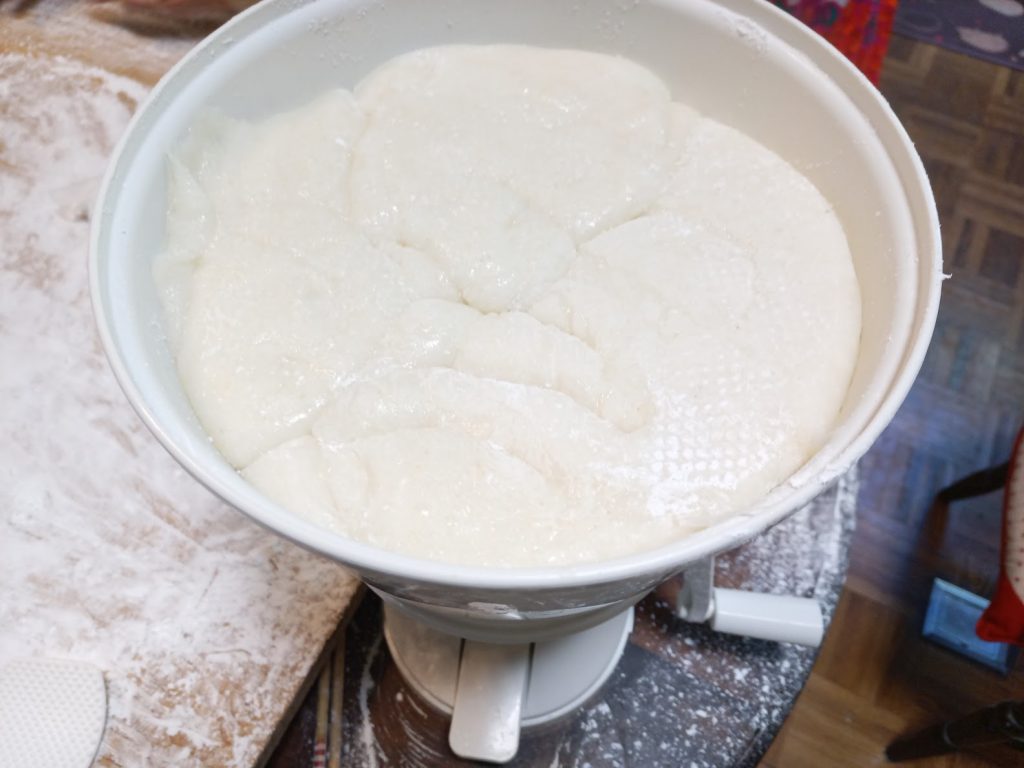
A useful mochi making tool that spares the hands from the scalding heat of the rice dough
Regardless of how you choose to make it, mochi is a food that requires one’s active attention and a decent amount of skill, which is part is surely a contributing factor to why it brings folks together together. Learning from others about the proper way to prepare the food requires instruction, especially when it comes to the specialized kagami mochi that is beautifully arranged and put on display.
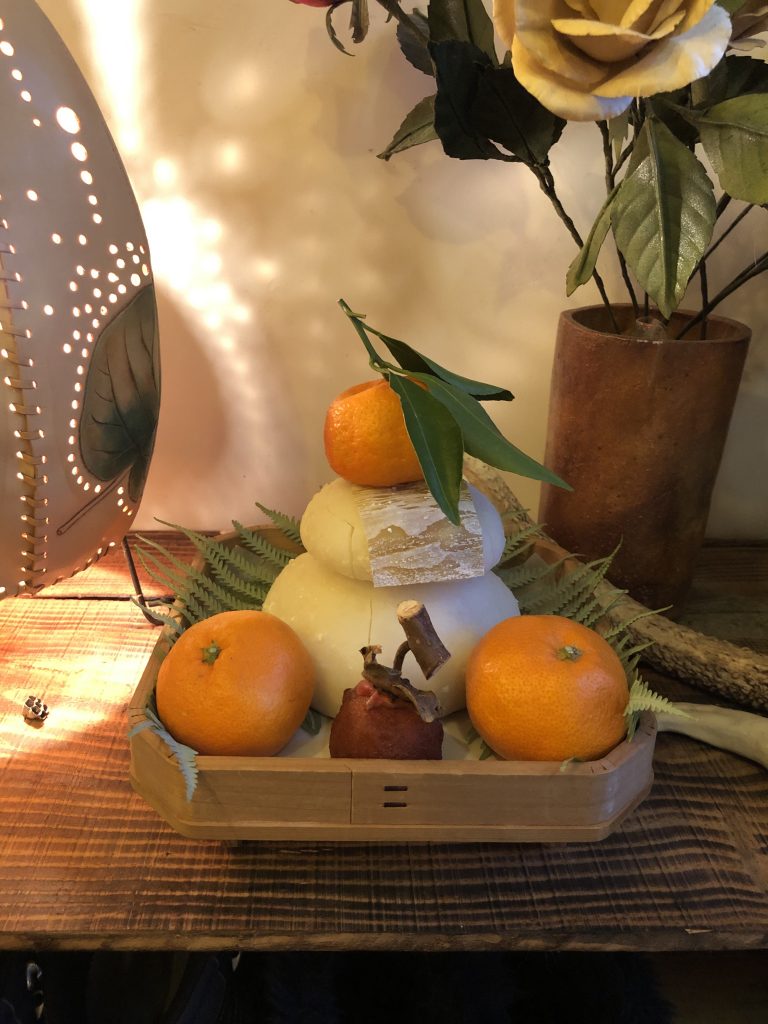
Kagami mochi
For the 2022 – 2023 New Year’s holiday, I was invited to visit Guesthouse Omoya to make mochi with the owners, who also grow their own rice locally. It was a lot of fun to learn about the process from beginning to end, and as the hours passed, our cooperative efforts improved, giving a nice sense of achievement with each batch we created. As we produced the mochi that would be distributed to friends a family, our conversation drifted from topic to topic, both reflecting on our year and discussing are hopes for the future. It really felt like a great way to cap off a year, and a wonderful reason to meet with friends and family.
I hope the act of mochitsuki continues to be done, as it truly is a fun, bonding experience, and it also delicious to eat afterwards as well!

Mochitsuki with friends in Omoya Guesthouse, Mitsue Village.
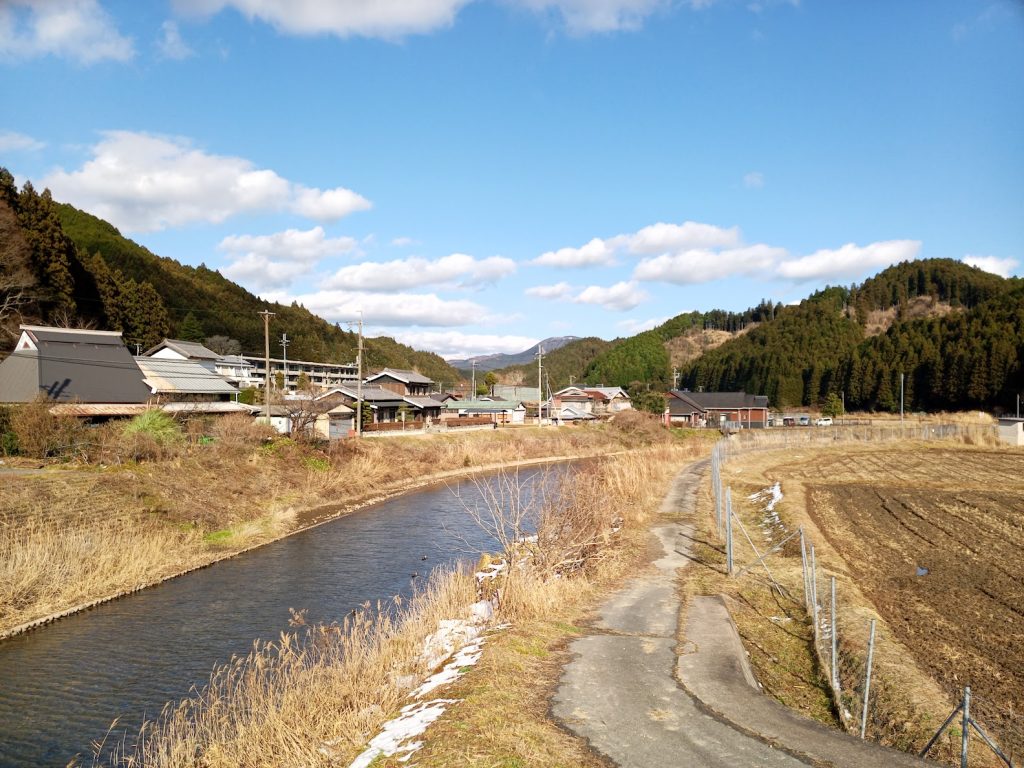
Mitsue Village, mountainous location in Nara where the tradition of mochitsuki done by hand continues to be practiced within the local community.
For more information on where you can see mochi being made and try it for yourself in Nara Prefecture, you can contact us anytime at Kansai Treasure Travel.

01
FIND YOUR FAVORITE
TRIP ON OUR WEBSITE.
SEND US AN INQUIRY.

02
PERSONALIZE THE TRIP
TO YOUR INTERESTS
WITH OUR CONSULTANT.

03
20% DEPOSIT TO CONFIRM.
BALANCE PRIOR TO ARRIVAL.
PAYMENT BY CC OR TT.

04
WE WILL
MEET YOU
AT THE AIRPORT.

05
DISCOVER THE
TREASURES!